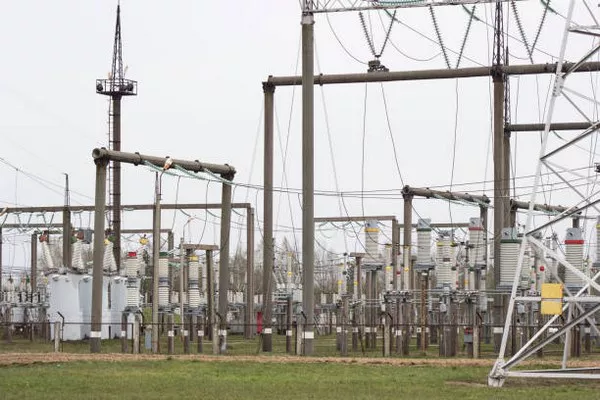Microwave transformers are commonly found in household microwave ovens, where they play a crucial role in converting high voltage electricity to the levels necessary for cooking. However, beyond their intended use, microwave transformers possess untapped potential for various DIY and electrical projects. In this article, we delve into the possibilities of what can be achieved with microwave transformers, exploring their capabilities and safety considerations.
Understanding Microwave Transformers
Microwave transformers are a type of high-voltage transformer specifically designed to step up the voltage from the standard household voltage to the high voltage required by the magnetron in a microwave oven. These transformers typically operate at frequencies around 2.45 GHz, the same frequency used by the magnetron to generate microwave radiation for cooking.
Internal Components
Inside a microwave transformer, you’ll find primary and secondary windings, a magnetic core, and sometimes a high-voltage capacitor. The primary winding is connected to the household power supply and is responsible for receiving the input voltage. The secondary winding, with significantly more turns of wire, steps up the voltage to the high levels needed for the magnetron.
Safety Considerations
When working with microwave transformers, safety is paramount. These transformers can produce lethal voltages and currents, posing a significant risk of electric shock. Therefore, it’s crucial to handle them with care and adhere to safety protocols at all times. This includes wearing appropriate personal protective equipment (PPE), such as insulated gloves and safety glasses, and ensuring that the transformer is discharged before handling it.
Applications of Microwave Transformers
Microwave transformers can be repurposed for a variety of applications beyond their original use in microwave ovens. Let’s explore some of the most common and creative ways to utilize these versatile components.
1. High-Voltage Power Supply
Microwave transformers are often repurposed to create high-voltage power supplies for various projects, such as powering vacuum tubes, ion generators, or electrostatic experiments.
Vacuum Tube Amplifiers
One popular application of microwave transformers is in the construction of vacuum tube amplifiers for audio enthusiasts and amateur radio operators. By repurposing the secondary winding of the transformer and adding additional components such as rectifiers and filter capacitors, hobbyists can create high-voltage power supplies capable of driving vacuum tubes for audio amplification.
Ion Generators
Another intriguing application is the construction of ion generators or ion thrusters for experimental propulsion systems. By utilizing the high voltage output of the microwave transformer, it’s possible to create a corona discharge that ionizes surrounding air molecules, generating thrust.
2. Spot Welder
Microwave transformers can also be repurposed to create DIY spot welders for joining thin metal sheets together. By modifying the secondary winding and incorporating a suitable control mechanism, such as a foot pedal or timer, hobbyists can produce high-current, short-duration pulses of electricity ideal for spot welding.
Construction
To build a spot welder using a microwave transformer, the secondary winding is typically rewound with fewer turns of thicker wire to reduce the voltage and increase the current output. Additionally, a suitable electrode holder and pressure mechanism are required to ensure proper contact between the electrodes and the workpiece during welding.
Safety Considerations
When operating a DIY spot welder, safety precautions are essential to prevent electric shock and burns. This includes insulating the electrodes, ensuring proper ventilation to dissipate heat, and using appropriate welding techniques to minimize the risk of injury.
3. Induction Heater
Induction heating is another fascinating application of microwave transformers, where high-frequency alternating current is used to heat metal objects through electromagnetic induction. By repurposing the secondary winding of the transformer and constructing a suitable induction coil, hobbyists can create compact and efficient induction heaters for various applications.
Principles of Induction Heating
In induction heating, an alternating current flowing through an induction coil generates a rapidly alternating magnetic field. When a conductive material, such as a metal object, is placed within this magnetic field, eddy currents are induced in the material, generating heat through resistive heating.
Applications
Induction heaters have numerous practical applications, including soldering, brazing, heat treating, and even cooking. By precisely controlling the frequency, power output, and heating duration, induction heaters offer a versatile and efficient method for heating metal objects with minimal energy loss.
4. Tesla Coil
For the more adventurous DIY enthusiasts, microwave transformers can be used to construct Tesla coils, high-voltage air-core resonant transformers capable of producing spectacular electrical arcs and displays.
Construction
Building a Tesla coil using a microwave transformer involves rewinding the secondary winding to increase the number of turns and achieve higher voltage output. Additionally, a suitable primary coil, capacitor bank, and spark gap assembly are required to create the resonant circuit necessary for oscillation.
Safety Considerations
Operating a Tesla coil can be inherently dangerous due to the high voltages involved and the risk of electric shock and burns. Therefore, it’s essential to take appropriate precautions, such as using insulated electrodes, keeping a safe distance from the coil during operation, and ensuring proper grounding to dissipate excess energy.
Conclusion
Microwave transformers offer a wealth of opportunities for DIY enthusiasts, hobbyists, and experimenters to explore the fascinating world of high-voltage electronics. Whether it’s building vacuum tube amplifiers, constructing spot welders, designing induction heaters, or creating Tesla coils, the only limit is your imagination (and a healthy respect for safety, of course). By understanding the principles of operation and adhering to safety guidelines, you can unlock the full potential of microwave transformers and embark on a journey of discovery and experimentation in the realm of high-voltage electronics.

